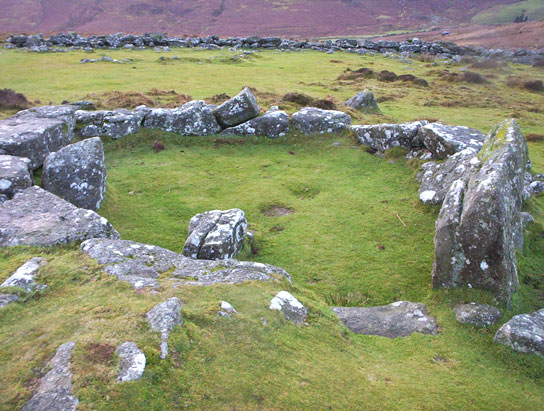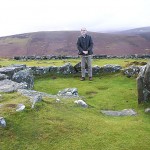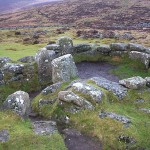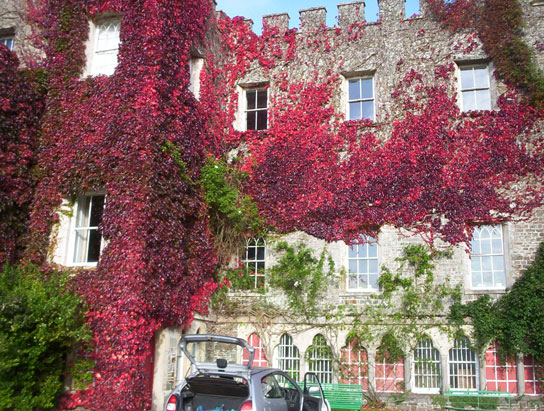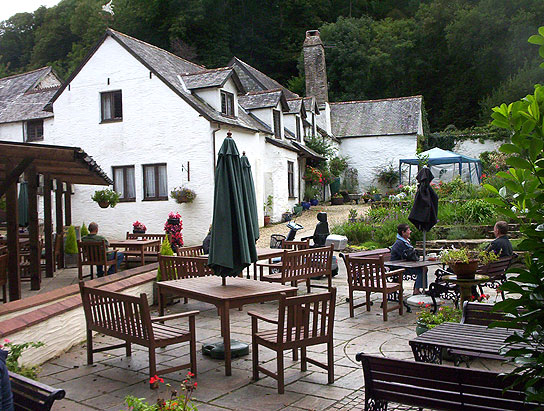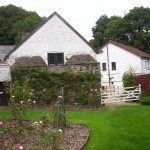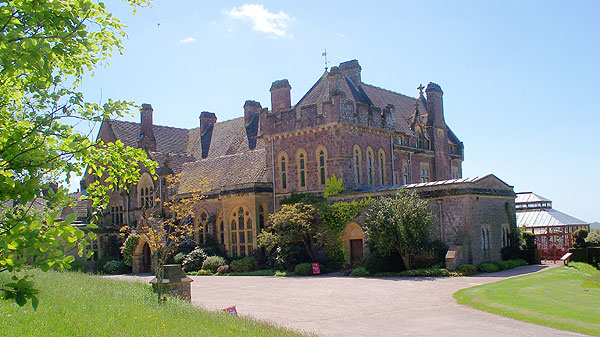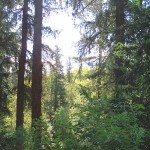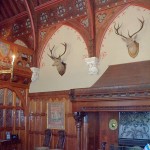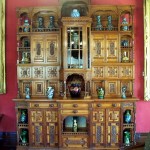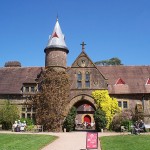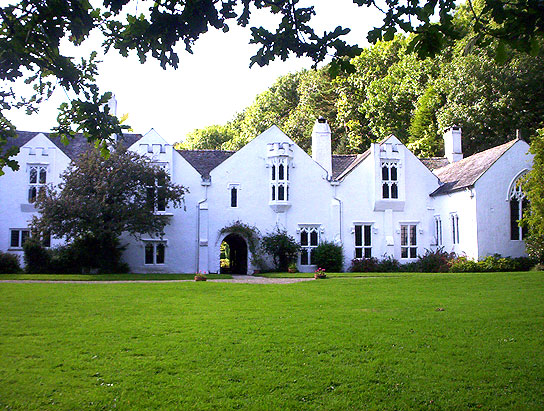National Trust.
Buckland Abbey was bought by Sir Francis Drake after his triumphant return from his circumnavigation of the globe in 1580. He was able to purchase a house that had recently been converted from the abbey church by his rival Sir Richard Greville. The house contains many mementoes of Drake, while its fabric contains many relics of the thirteenth-century abbey church in the form of its crossing tower, blocked arches and traces of monastic windows, and inside, the tracery of the chancel arch. The house has Georgian alterations, and the only complete interior surviving from early times is the sixteenth-century great hall. This is warmly panelled in oak, with an elaborate ceiling, box frieze, and relics of Grenville’s retirement to Buckland. In the upper part of the house, rooms of no architectural interest contain displays.
The interior and the Drake relics are interesting. Outside is a great monastic barn, built about 1300, and one of the largest in Britain. To my mind this is a more satisfying piece of architecture than the mongrel church conversion. Also to be seen are a little herb garden, and a re-created Elizabethan garden, and the wider estate.
As the crow flies, Buckland is quite close to Cotehele (NT), but if you are planning to do both in one day, be cautioned that they are not so close via the local roads!

